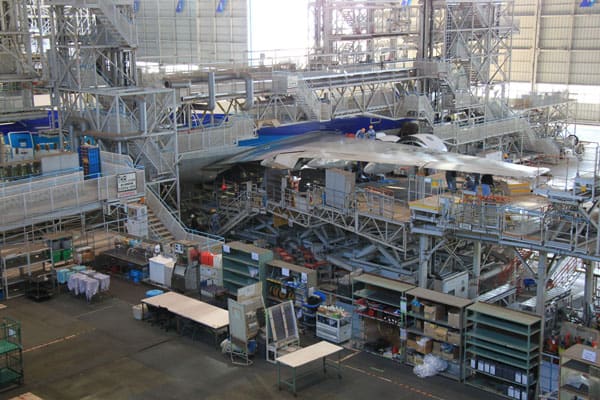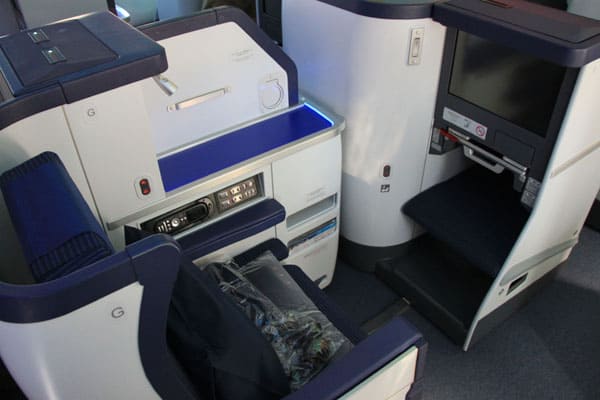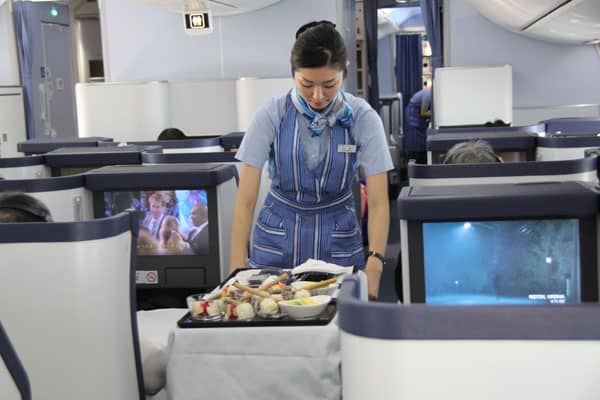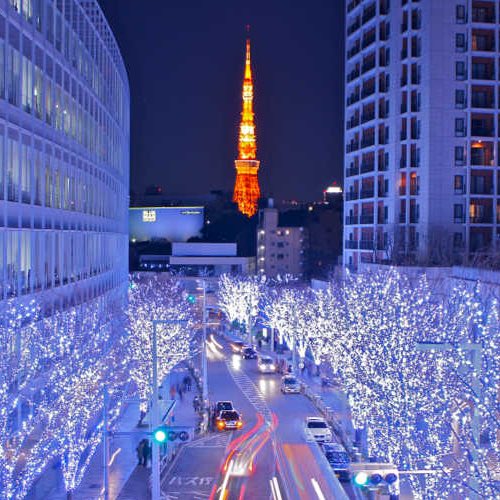I just heard the news that ANA had an incident with a domestic 787 flight and has grounded all 787s until they get a chance to inspect all 17 of the aircraft in their fleet. This is singularly odd timing because I am on a press trip sponsored by ANA to celebrate and to promote their new route from San Jose, California to Tokyo, Japan. This is a route where they are flying the 787.

ANA Press Trip
Clearly ANA did the right thing of grounding their planes if they suspect there might be a problem, but my reaction when I heard the news was “I sure hope they get that all checked out so I can fly back on the 787 on Monday”. So while some may be shying away from the new 787 because of news stories I personally will be looking for chances to fly on one again, particularly one flown by ANA, and let me tell you why.
I love to fly but compared to some of the more seasoned press members on my tour I am just an amateur plane geek. ANA flew us to Tokyo in their new business class on the 787 and I was amused to see how giddy some of these seasoned travel and aviation writers got over the plane, the ANA business class and the service.
Boeing 787 Dreamliner
The Boeing 787 Dreamliner is a revolutionary design from Boeing. In common airline parlance a plane can sometimes be referred to as the “metal”. For example, ANA has a partnership with United airlines to cross sell each other’s products in a way that is “metal neutral”, that is to say not caring if the passenger is flying on a plane painted with a United logo or painted with an ANA logo. But the 787 is the first commercial jet that is not actually made out of metal. The structural elements of the 787 Dreamliner are carbon fiber composite.
Having a plane that is not metal has a number of advantages. The plane is lighter and therefore uses 20% less fuel than a similar sized conventional jet. Metal corrodes and welds crack overtime so the expectation is that the 787 will need less maintenance over time. Roughly every 5 years ANA, for example, will rotate a jet out of service to perform and extensive inspection of all the welds and structural components that they do not anticipate needing for the Dreamliner.

ANA Maintenance Facility – Haneta Airport
What passengers will notice first may be the larger windows. I am not exactly sure why bigger windows seemed to make such a big difference to me psychologically but I was not the only one who had that reaction. It felt less like being trapped in a big metal tube. The windows dim using an electrical system rather than using the clunky windows shades of traditional jets. Even the bathroom has a window.
The humidity on the 787 is also higher than that of a traditional jet because of a new recirculating air filtration system. This is enabled to some degree because there is not a concern with corrosion. The idea is that after a long flight you won’t feel as dehydrated on the 787. Of our group of 8 writers and bloggers I may have been the only one who could not tell the difference.
We toured the ANA maintenance facility and got to ask questions about some of the glitches that ANA has had with the 787 and so far, they told us, they feel they are pretty similar to those they have with any new aircraft design. When they started flying the 787 they had longer layovers and more time built into schedules for inspections. This was in part to deal with any issues that might come up in the plane and in part because they were training their maintenance crew on the new aircraft.
At least before yesterday, ANA felt that the 787 had improved in aircraft availability over the year and a half they have been flying it to the 99% availability they see with the rest of their fleet of aircraft. I suspect it will soon return to service. I hope it will return to service by next Monday.

Boeing 787 Dreamliner – Business Class on ANA
ANA Business Class
I usually fly coach so having any sort of lie flat seat would be a huge improvement but having space to stretch out all 6’ 3” of my frame was just awesome. Being able to recline without guilt because reclining did not take space away from anyone else was also wonderful.
The business class configuration gives everyone their own space so this is not the sort of service for you if you want to spend the duration of the flight talking to a seat mate. However, for someone like me who wants to retreat into my own space it was ideal. The plane was noticeably quiet, such that I never pulled out my noise canceling headphones but simply used the headphones provided. The headphone jack is a two prong configuration so they probably would not have worked in any case.
The video entertainment system gave plenty of options in a variety of languages. I watched four and half movies and slept for 2 hours on my trip from San Jose to Tokyo.
The restrooms on the plane, at least in the business class had the Japanese style toilet with an array of controls that combine your usual routine with a good power wash if so desired. Frankly I don’t know why these have not caught on in the U.S.
I almost always use carry-on luggage and was surprised how large the overhead bins were. My carry-on is large enough that I sometimes have to gate check it on some flights where the aircraft bin is too small to hold it. By contrast these bins were cavernous.

Business Class service on ANA
ANA Service
Even if I don’t get to fly on the Dreamliner on the way home to California I still should be able to enjoy the level of service that was provided by ANA. The menu for the flight had 24 pages with a mixture of Japanese and international cuisines. The presentation was attractive, the flavors were far above the oxymoron that is usually “airline food” and the white table cloth service was impeccable. I ate two meals on the flight over but that was limited only by my appetite, not by the availability of food service.
There is a culture of polite service in Japan that I am only now starting to comprehend on this my first visit to the country. I have never been bowed to so many times nor returned so many bows in kind. This culture is infused in the ANA service and I swear it made me more well-mannered in response.
Conclusion
Two thirds of the aircraft in the ANA international configuration of the 787 is dedicated to business class. Clearly ANA intends to cater to business travelers between Silicon Valley and Tokyo (and other connections in Asia). They intend to compete with the ease of San Jose airport, the better on-time record of San Jose airport, a wonderful new business lounge located just above the departure gate and a superior flight experience. I think they have a good chance of succeeding in this market and I offer 8 giddy travel and aviation writers as proof.
Also read:
Inflight: ANA’s Boeing 787 from San Jose to Tokyo [PHOTOS] by Chris McGinnis
+Chris Christensen | @chris2x | facebook
One Response to “Flying the Boeing 787 Dreamliner on ANA from San Jose to Tokyo”
Leave a Reply
Tags: air travel, article, japan, tokyo


 Hotel Review – Capitol Hotel Tokyu – Tokyo, Japan
Hotel Review – Capitol Hotel Tokyu – Tokyo, Japan 9 Things to do in Tokyo and Japan
9 Things to do in Tokyo and Japan What to do in Tokyo in December (Video #104)
What to do in Tokyo in December (Video #104) Travel to Tokyo, Japan – Episode 148
Travel to Tokyo, Japan – Episode 148

flyawaycafe
Says:January 16th, 2013 at 9:05 pm
I read that they grounded the 787 fleet through Thusday, giving Boeing time to inspect what’s going on. That may be extended, of course, but I’m hoping they get it all figured out for your return trip. If not, the 777 (which I expected they use instead) isnt’ a bad plane – but it just isn’t the Dreamliner.